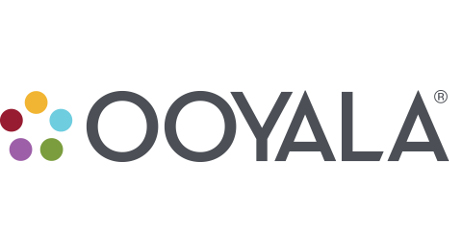Ooyala: Broadcasters' Future is with OTT
The explosion of streaming/OTT services and channels have given the average American TV household more choices than ever before. Although Millennials are increasingly abandoning traditional TV for viewing SVOD on mobile devices, Baby Boomers are not far behind in their adoption of OTT as well, according to a new report from Ooyala.

“While older viewers remain the lifeblood of traditional broadcasters, increasingly they too are adopting OTT,” said Jim O’Neill, principal analyst for the company in its “State of the Broadcast Industry 2019.” He cited a 2018 Kagan survey that showed that VOD-only viewing among Internet adults had doubled to 12 percent from 6 percent a year earlier, with Boomers and the Silent Generation--those born before World War II--showing the biggest shift toward VOD.
In respect to UHD, consumers are “all in” on the high-res format, O’Neill said, citing a report from Futuresource that predicts double digit growth in sales into 2022 as UHD TV shipments “power past 100 million units” in 2018. China is the biggest market for UHD, followed by the U.S.
The demand for UHD/4K content will be driven by new, affordable 4K-capable streaming devices and the availability of content from services such as Netflix. “Broadcasters have upped their UHD game as well,” O’Neill said. “The promise of 4K and UHD content from the Winter Olympics and FIFA World Cup helped drive consumer interested and prompted more broadcasters to make those streams available.”
Ironically, if broadcasters are going to deliver on the promise of UHD, it won’t be via the new broadcast standard ATSC 3.0, according to the report. O’Neill cited the slow process of standards development and deployment and questions over whether consumer electronics devices will be available as mitigating factors.
“The standards have been debated for years,” he said. “Every major broadcasting conference contains multiple sessions to talk about its future, and several major players have promised to support it. The bigger problem may be a simple one: Consumers. Television sets need the right chips to take advantage of ATSC 3.0, so consumer electronics manufacturers have to be onboard.”
This impatience was reflected in a quote from Frank Aycock, a “theoretical televisionist” and professor at Appalachian State University: “It’s time to declare ATSC 3.0 DOA,” he said. “Just like Mobile DTV before it, ATSC 3.0 has not lived (and is not living) up to the hype that heralded its introduction to the 21st Century Television audience.”
Get the TV Tech Newsletter
The professional video industry's #1 source for news, trends and product and tech information. Sign up below.
“The bottom line may be that 5G is already winning the content delivery race before it has even officially begun,” O’Neill concludes.
The report recommends broadcasters wholeheartedly embrace OTT, citing the networks’ move towards creating their own OTT portals for network programming.
“Broadcasters CBS and NBCU have turned selling content to streamers into an art, even calling out impressive revenue streams from OTT sales as highlights in quarterly earnings calls,” O’Neill said. “That, more than anything else, shines a bright light on the future of broadcasting and the future of streaming.
Tom has covered the broadcast technology market for the past 25 years, including three years handling member communications for the National Association of Broadcasters followed by a year as editor of Video Technology News and DTV Business executive newsletters for Phillips Publishing. In 1999 he launched digitalbroadcasting.com for internet B2B portal Verticalnet. He is also a charter member of the CTA's Academy of Digital TV Pioneers. Since 2001, he has been editor-in-chief of TV Tech (www.tvtech.com), the leading source of news and information on broadcast and related media technology and is a frequent contributor and moderator to the brand’s Tech Leadership events.

